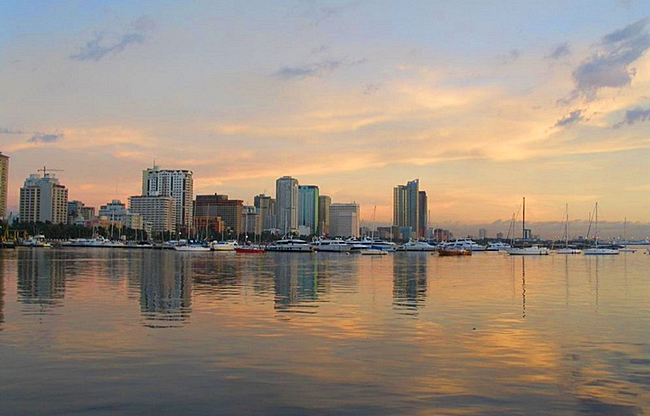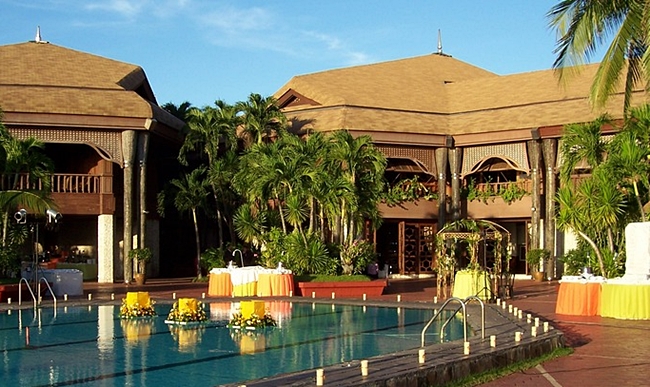Interesting places in Manila
Manila is the capital of the Philippines. This city, located on the island of Luzon, is one of the most dynamic and modern cities in Southeast Asia. Manila has a sufficiently developed infrastructure and is a conglomerate consisting of seven main cities – Manila, Paseo, Quezon City, Mandaluyong, Caloocan, Makati and Pasig. But let’s not go into such details, let’s just find out what interesting things the Philippine capital has prepared for tourists.
Intramuros
The heart of Manila is Intramuros – an ancient wall that has survived to this day and was once a defense against various raids for the first Spanish settlement. It was this fortress, surrounded by a wide moat, that gave rise to the city of Manila – until the 19th century, the words “Manila” and “Intramuros” were synonymous. And only in the 19th and the beginning of the 20th century did Manila “step over” the walls of the fortress, making it just a part of the city.

Boulevard Rojas
All the most expensive hotels, clubs and restaurants in Manila are located on Rojas Boulevard. Life here does not slow down for a minute. At dawn, the boulevard is full of athletes in pursuit of a healthy lifestyle; during the day, it is filled with a motley crowd of local residents hurrying on business and idly walking tourists, and the sunset on Rojas Boulevard is a must-see when visiting Manila. At this time, the sun paints the sky, sea, palm trees and sand with thousands of bright colors.
Ayala Museum
The most visited cultural object in the city is the Ayala Museum, which was opened in 1967. Now the museum houses a rich collection of archaeological and ethnographic exhibits that were brought here from different regions of the Philippine Islands. The most unusual exhibits are handmade dioramas, which depict the most important moments in the history of the Philippines.
Shoe Museum
Lovers of unusual sights will like the Shoe Museum, named after the famous actress Imelda Marcos. She was a big fan of exclusive shoes, today in the museum, in addition to personal belongings of Imelda Marcos, you can also see pairs of shoes that belonged to other world celebrities. Located in Manila, the Shoe Museum is a record holder of the Guinness Book of Records, it brings to the attention of visitors the largest collection of shoes in the world.
St. Augustine Cathedral
Built in 1587, the Catholic Cathedral of St. Augustine is one of the few medieval buildings that survived in Manila after the bombings of the Second World War. This oldest Christian church in the Philippines is still active. The interior of the cathedral has preserved ancient frescoes, stained glass windows and carvings. Not far from the church is the St. Augustine Museum – a real treasure trove for lovers of antiques.

Chinese cemetery
One of the oldest cemeteries in Manila has long been a popular tourist attraction, not least because it is one of the few places in the city that is quiet and green. It is not scary at all and very educational. Many of the crypts here look better than other residential buildings in Manila. By the way, these crypts sometimes really become residential when relatives come to visit the dead. Some crypts have two floors, air conditioners, toilets, even showers. Guides work at the Chinese cemetery, whose services should not be neglected – in a 1-2 hour tour, they can tell a lot of interesting things about the turbulent life of the cemetery.
Chinatown
Chinatown in Manila’s Binondo district is the oldest Chinatown in the world, mainland Chinese settled here already at the end of the 16th century. The best time to visit it is the end of January to the beginning of February, during the Chinese New Year. However, even on ordinary days, you can take a walk or ride in Calais along the colorful shopping streets with Buddhist temples, kung fu schools and Chinese restaurants, where shark fins and aromatic dim sum dumplings are prepared.
Coconut Palace
This building was built for Pope John Paul II in 1981. But she entered history for a completely different reason – as one of the examples of the “unheard of generosity” of the wife of the then dictator of the Philippines, Imelda Marcos. The first lady had the reputation of the main spendthrift in the country (her luggage during foreign trips amounted to 200-300 suitcases, and her passion for diamonds became a proverb in tongues). The Coconut Palace is one of her high-profile expenses. The residence cost the treasury an astronomical, for the Philippines at that time, amount – $ 10 million. In addition to the actual building, a beautiful garden, a park of butterflies and orchids is worth seeing here.
Theater “Metropolitan”
The Manila Metropolitan Theater, like the Coconut Palace, is considered one of the main attractions of the capital of the Philippines. It is difficult to overestimate his role in the cultural life of the country and in the development of theater art in Manila. In addition, the theater is interesting from the point of view of architecture and history.
Park Paco
Paco Park is located in the district of the same name in Manila, the capital of the Philippines. Along with the Manila Oceanarium, it is one of the most popular places for recreation for city residents and guests. Loving hearts seek solitude on its benches, wedding celebrations and concerts are held here.
